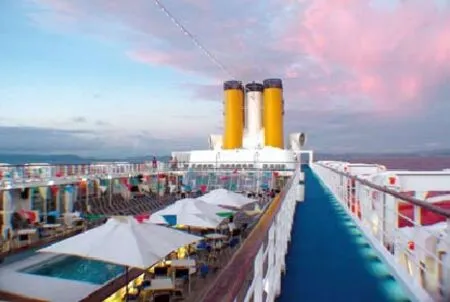Home Port vs Port of Call
Reporter Xu Hua

With the cruise economy rapidly rising in China, “port creation” is prevalent around the country. Apart from the well-known cruise home ports like Shanghai and Tianjin, twelve coastal cities such as Dalian, Qingdao,Zhoushan, Xiamen and Sanya etc. have also begun to build cruise home ports. Suddenly all cruise terminals built in the north and south are calling themselves“home ports”, the war on home port will break out anytime.
However, not long ago, the Ministry of Transport issued the “Coastal Cruise Ports Layout Plan in China”(hereinafter referred to as the Plan), which proposes that before 2030, the layout with 2~3 coastal cruise home ports as the leading ones, the port of departure as the main body and the port of call as the supplement shall be established. Whether this proposal will cool down the “home port fever”?How many cruise home ports will we actually need? Where will Chinese cruise economy head for in the future?
Cheng Juehao, the Director of the Cruise Economy Research Institute of Shanghai International Shipping Center believes that for the huge national consumer groups,the potential of this newly emerging holiday-making way of cruise has not yet been fully tapped. The port infrastructure which is the driving force for industry development continues to be optimistic about its huge investment prospect.
Cruise home port has long been endowed with lots of glory. It requires comprehensive conditions for service facilities and equipment for the simultaneous docking,calling and departure of several large cruises; the capability to provide comprehensive service and other ancillary services for the cruise economy development during the whole process; the base for cruises which can provide supplies, waste disposal, maintenance and repair; the location of home port for cruise company being the headquarter for the area or company. In particular, there is a view that the cruise home port is the great driving force for the local economy with the economic output generally being 10-14 times of that of the port of call, and this driving force makes the glorious label of “home port” the necessity for the newly-built cruise ports.
However, the newly-launched “Plan” puts forward that before 2030, the layout with 2~3 cruise home ports as the leading ones, the port of departure as the main body and the port of call as the supplement shall be established. Will such proposal cool down the prevalent construction of home port?
Cheng Juehao believes that in fact the concept of “home port” should not be given a high threshold, which means that ports with regular operation of cruises during a period of 3~5 months should be categorized as home ports. Actually, there are only two simple categories for cruise terminal: one is home port, the other is port of call. The former is the departure point and returning point for tourists and thus acquires the concept of entry and exit. During this period, it is very natural to carry out and complete the provision of supplies, maintenance, handover between crews and the establishment of of fi ce. At present, there are several such home ports in China and there will be even more in the future. The cruise economy in the US is the most developed, with more than 10 million people taking cruise to travel each year and 25 cruise home ports.In China, the number of people taking cruise to travel will surpass 1.2 million, and will reach 10 million by 2030~2030, therefore, it is definite that China"s home ports are far from being enough.
The rapid rise of cruise home port is not the only result of the direct profit it produces for the cruise supply. Cheng Juehao believes that the reason that the development of cruise industry is highly favored by coastal port cities in China is that home port construction not only means more tourists, what is more important is that the home port construction can be the effective driving force for transformation and upgrading of the old ports, which is closely related to the function upgrade, environmental improvement,industry transformation and image building and other internal demands. The construction and development of the modern tourism ports is like the catalyst, prompting the urban upgrade and is the means for the promotion of the image of cities.
There is a popular view that cruise home port is the huge potential pushing force for the economy of the port city, especially for the renovation of the surrounding areas and the appreciation of the estate price, whereas the aftermath of the steady stream of large number of visitors for the city is often overlooked.
The Annual Report of Outbound Tourism Development of China 2014 points out that last year the position of China as the world"s largest outbound tourism market and the fi rst outbound tourism consumption country is further consolidated. The number of outbound tourists is more than 100 million, and more than $130 billion have been spent, maintaining the momentum of growth by more than 20%. The Director of China Tourism Research Institute, Dai Bin believes that overseas travel is becoming the normal living style for general middle-class people. The strong purchasing power will produce real driving force for consumption for the port of call.

